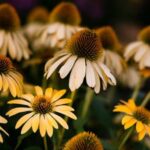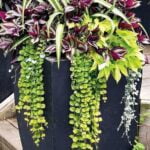Are you a beginner looking for landscape painting ideas to kickstart your artistic journey? Whether you’re a complete novice or just starting out, landscape painting can be a rewarding and fulfilling creative outlet. In this article, we’ll explore the essential materials and tools you’ll need, how to choose the right landscape subject, understand composition and perspective, and provide step-by-step tutorials for creating your own beautiful landscapes.
We’ll also offer tips for mixing colors, creating depth, and share common mistakes to avoid. By the end of this guide, you’ll be brimming with inspiration and ideas for your next landscape painting project.
When it comes to landscape painting ideas for beginners, it’s important to start with the basics. Understanding the essential materials and tools such as brushes, paints, canvases, and easels is crucial. Once equipped with the right supplies, beginner painters can then focus on selecting the right landscape subject. From serene countryside scenes to breathtaking mountain vistas, there are countless options to explore.
In addition to providing practical guidance on techniques and tools required for landscape painting, this article will also delve into the creative aspects of art. Understanding composition and perspective is key to creating compelling landscapes that draw in the viewer. With step-by-step tutorials and expert tips sprinkled throughout each section of this guide, beginners will gain valuable insights that will help them grow as artists.
Essential Materials and Tools for Landscape Painting
To begin your journey into landscape painting, it’s essential to gather the right materials and tools that will help you create beautiful works of art. Here are a few must-have items for beginner landscape painters.
First and foremost, you’ll need a sturdy easel to support your canvas or painting surface. This will allow you to work comfortably and at the right angle as you apply your brushstrokes. Additionally, investing in high-quality brushes is crucial. Look for a variety of sizes and shapes, including flat, round, and filbert brushes, which will give you the versatility to create different textures and details in your landscapes.
Another essential item is a good set of acrylic or oil paints in basic colors. As a beginner, it’s important to familiarize yourself with color mixing and blending techniques, so starting with primary colors such as red, blue, yellow, white, and black will enable you to create a wide range of hues. An artist palette or palette knife for mixing your paints is also necessary.
When it comes to surfaces for landscape painting, canvas panels or stretched canvases are popular choices. They provide a firm yet flexible foundation for your artwork. To further protect your work-in-progress from dust or accidental smudging, consider using a fixative spray for pastel or charcoal landscapes.
Overall, having these essential materials and tools at your disposal will set you up for success as you explore different landscape painting ideas for beginners.
| Materials | Tools |
|---|---|
| Easel | Brushes (flat, round, filbert) |
| Acrylic/Oil paints in basic colors | Artist palette/palette knife |
| Canvas panels/stretched canvases | Fixative spray (for pastel/charcoal landscapes) |
Choosing the Right Landscape Subject
When it comes to landscape painting, choosing the right subject is essential for beginners to create a successful and visually appealing artwork. Here are some tips on how to select the perfect landscape subject for your painting:
- Consider different time of day: Whether it’s sunrise, sunset, or midday, the lighting and colors of a landscape can change drastically depending on the time of day. Experiment with different times to capture the mood you want to convey in your painting.
- Explore various seasons: The same landscape can look entirely different in different seasons. From the lush greenery of spring to the warm hues of autumn, each season offers unique opportunities for landscape painting ideas for beginners.
- Look for interesting compositions: When scouting for a landscape subject, pay attention to interesting compositions that can guide the viewer’s eye through the entire painting. This could be a winding river, a meandering path, or a cluster of trees. Make sure there is a focal point that draws attention.
In addition to these tips, remember that inspiration can come from anywhere – whether it’s a beautiful view from your window or a photo you stumble upon online. The key is to be open-minded and observant as you consider potential subjects for your landscape paintings.
Understanding Composition and Perspective in Landscape Painting
When it comes to landscape painting, understanding composition and perspective is crucial for creating a successful and visually appealing artwork. Composition refers to the arrangement of elements within the painting, while perspective pertains to creating a sense of depth and distance. For beginners, mastering these principles can be challenging, but with practice and dedication, it is certainly achievable.
One key aspect of composition in landscape painting is the rule of thirds. This rule involves dividing your canvas into nine equal parts using two horizontal lines and two vertical lines. The focal points of your painting should then be placed along these lines or at their intersections, creating a more balanced and aesthetically pleasing composition. Additionally, considering foreground, middle ground, and background elements can help add depth to your painting.
In terms of perspective, beginners should focus on creating a sense of distance within their landscapes. This can be achieved through techniques such as aerial perspective – where objects appear lighter and less detailed as they recede into the distance – and linear perspective – which involves using converging lines to create the illusion of depth. By incorporating these principles into their landscape paintings, beginners can elevate their work and create more engaging pieces of art.
| Landscape Painting Principles | Key Ideas |
|---|---|
| Composition | Rule of thirds, balancing elements |
| Perspective | Aerial perspective, linear perspective |
Step-by-Step Tutorial for a Beginner Landscape Painting
Creating a beautiful landscape painting as a beginner can be both exciting and challenging. With the right guidance and techniques, you can create stunning landscape artwork that captures the natural beauty of your surroundings. In this section, we will provide you with a step-by-step tutorial for a beginner landscape painting to help you get started on your artistic journey.
Gathering Your Materials
Before you begin your landscape painting, it’s important to gather all the necessary materials and tools. You will need a variety of paint brushes in different sizes, acrylic or oil paints in various colors, a palette for mixing colors, canvas or painting paper, and a palette knife for applying paint. Make sure to set up your workspace in a well-lit area with good ventilation to ensure comfort and ease while painting.
Sketching Your Composition
Start by sketching out the basic composition of your landscape on your canvas or painting paper using a pencil. Consider elements such as the horizon line, foreground, middle ground, and background. You can use simple shapes and lines to outline the major features of your landscape, such as trees, mountains, water bodies, or buildings. This initial sketch will serve as a guide for your painting process.
Building Layers and Adding Details
Once you have sketched out your composition, begin by adding layers of paint to create depth in your landscape. Start with the background elements first and gradually work towards the foreground. Use lighter colors for distant objects and darker shades for closer elements to create a sense of perspective.
Pay attention to details such as textures, shadows, and highlights to bring life to your landscape painting. With practice and patience, you can refine your skills and develop your own unique style in landscape painting ideas for beginners.
Tips for Mixing Colors and Creating Depth in Landscape Painting
When it comes to landscape painting, mixing colors and creating depth are essential skills that every beginner should master. Here are some tips to help you achieve beautiful and realistic landscapes in your paintings:
- Use a limited color palette: Start with a basic set of colors such as red, blue, yellow, black, and white. Experiment with these colors to create various shades and tones for your landscape.
- Understand color theory: Learn about the color wheel and how different colors interact with each other. This will help you in creating harmonious and balanced compositions in your landscape paintings.
- Practice mixing colors: Spend time experimenting with different combinations of colors to understand how they blend and interact. This will give you a better understanding of how to achieve the desired hues for your landscape.
Depth is another important aspect of landscape painting that can bring your artwork to life. Here are some tips for creating depth in your paintings:
- Use atmospheric perspective: Create the illusion of distance by using lighter, cooler colors for objects that are farther away, and darker, warmer colors for objects that are closer.
- Pay attention to scale and size: Objects that are closer to the viewer should appear larger, while those in the distance should be smaller. This helps create a sense of space and depth in your landscape.
- Add layers and textures: Incorporating different layers and textures in your painting can enhance the sense of depth. Consider adding elements such as foliage, rocks, or water to create visual interest and depth in your artwork.
By mastering the art of mixing colors and creating depth in your landscape paintings, you can take your artwork to the next level. Remember to practice regularly and experiment with different techniques to find what works best for you as an aspiring landscape painter. With dedication and patience, you can develop these skills to create stunning landscapes on canvas.
Common Mistakes to Avoid in Landscape Painting for Beginners
Overworking the Painting
One of the most common mistakes that beginners make in landscape painting is overworking the painting. It can be tempting to keep adding more details and layers, but this often results in a muddy and overworked image.
To avoid this, try to step back from your painting regularly and assess whether it needs more work or if it’s best to leave it as it is. Remember, sometimes less is more, and a simple and clean approach can result in a more striking landscape painting.
Ignoring Color Theory
Another mistake beginners often make is ignoring color theory when creating their landscape paintings. Understanding how colors work together, how to mix them effectively, and how to create harmony in your palette is essential for creating a successful landscape painting. Take the time to learn about color theory and experiment with different color combinations to elevate your landscape paintings.
Copying Rather Than Interpreting
It’s easy for beginners to fall into the trap of trying to replicate a landscape exactly as they see it, rather than interpreting it through their own artistic lens. While reference photos can be helpful, don’t be afraid to add your own personal touch to your landscape paintings. Experiment with different styles, techniques, and interpretations to create unique and captivating landscape paintings that reflect your own vision.
By recognizing these common mistakes and taking steps to avoid them, beginner landscape painters can improve their skills and develop their own style. Keep these tips in mind as you continue on your journey as a landscape painter, and remember that making mistakes is all part of the learning process.
Inspiration and Ideas for Landscape Painting Projects
When it comes to landscape painting, there are endless possibilities for inspiration and ideas. As a beginner, finding the right subject and approach to your landscape painting project is essential for a successful and enjoyable experience. One of the best ways to get inspired is by spending time in nature and observing different landscapes. Take a walk in the park, visit a beach, or explore the countryside to find the perfect scene for your painting.
Another great source of inspiration for landscape painting ideas for beginners is studying the works of renowned landscape artists. Look at paintings by Claude Monet, Vincent van Gogh, or Georgia O’Keeffe to see how they captured the beauty of nature in their own unique styles. Additionally, take advantage of online resources such as social media platforms, art blogs, and websites dedicated to landscape painting to discover new ideas and techniques from other artists.
As you gain more confidence in your skills as a beginner landscape painter, don’t be afraid to experiment with different subjects and compositions. You can try capturing the changing seasons, exploring different weather conditions, or even focusing on specific elements within a landscape such as trees, rivers, or mountains.
By challenging yourself with diverse subjects, you’ll continue to grow as an artist while discovering new ideas for your landscape painting projects. Remember that the key is to enjoy the process and let your creativity flow as you explore various landscape painting ideas for beginners.
Conclusion and Encouragement for Beginner Landscape Painters
In conclusion, landscape painting can be a rewarding and enjoyable artistic pursuit for beginners. With the right materials, tools, and knowledge of composition and perspective, anyone can create beautiful landscape paintings. By choosing the right subject and incorporating step-by-step tutorials, beginners can build their skills and confidence in this art form.
It’s important for beginner landscape painters to remember that practice makes perfect. Experimenting with different colors, techniques, and subjects will help improve your skills and develop your own unique style. Don’t be afraid to make mistakes, as they can be valuable learning experiences in your journey as a painter.
As you continue on your landscape painting journey, seek inspiration from nature itself. Whether it’s a serene lake, a majestic mountain range, or a peaceful meadow, there are endless possibilities for capturing the beauty of the natural world on canvas. Remember that there are no limits to creativity when it comes to landscape painting ideas for beginners – let your imagination run wild and enjoy the process of bringing your vision to life on the canvas.
Frequently Asked Questions
How Should a Beginner Paint Landscape?
A beginner should start painting landscapes by choosing a simple scene with a clear focal point. It’s important to start with basic shapes and forms, focusing on light and shadow to create depth.
Using a limited color palette can also help simplify the process for beginners. It’s also helpful to practice different brushwork techniques and experiment with creating different textures.
What Is the Easiest Style of Painting for Beginners?
The easiest style of painting for beginners is often considered to be the impressionist style. This style allows for more freedom and expression, using loose brushwork and bold colors to capture the essence of a scene rather than focusing on precise details. Impressionism is forgiving when it comes to mistakes, making it ideal for those who are new to painting.
What Order Do You Paint a Landscape?
When painting a landscape, it’s often recommended to start with the sky and background, then gradually work your way forward to the middle ground and foreground. Starting with larger areas of color and gradually adding smaller details can help create a sense of depth in the painting.
It’s important to pay attention to how colors and values shift as they recede into the distance in order to create a realistic-looking landscape.

Welcome to my gardening blog! I am passionate about plants and enjoy sharing my knowledge and experiences with others. In this blog, I will write about everything related to gardening, from tips on how to get started to updates on my own garden projects.





